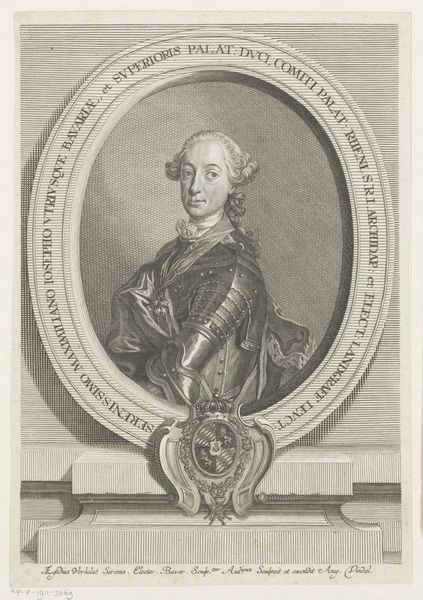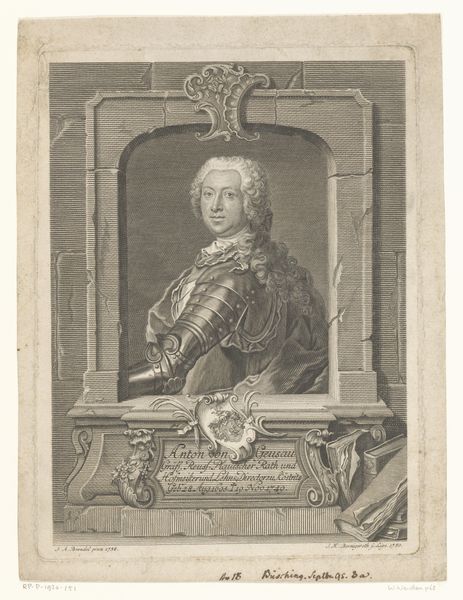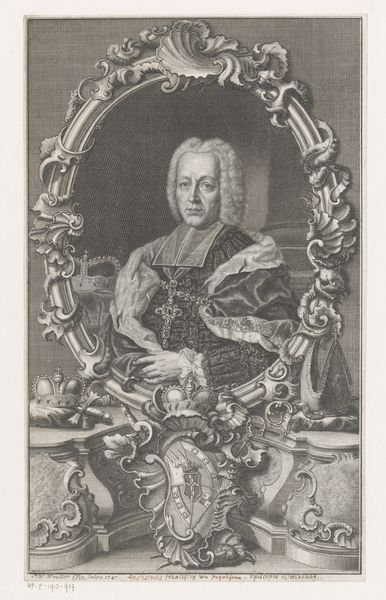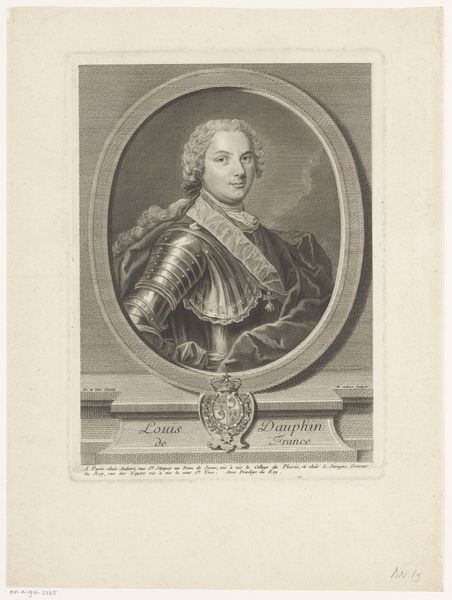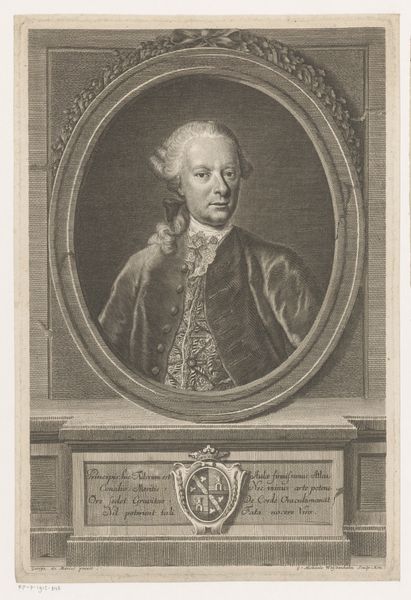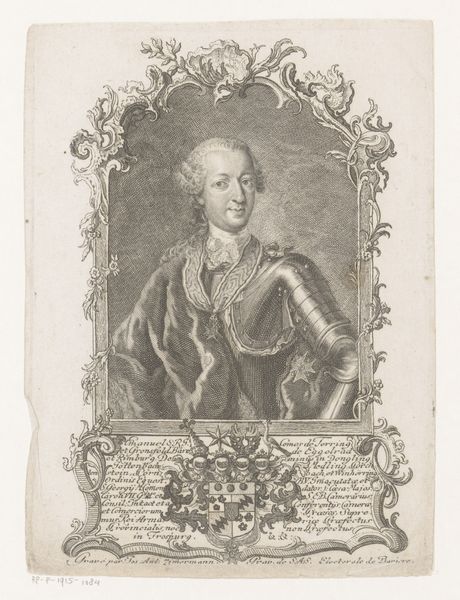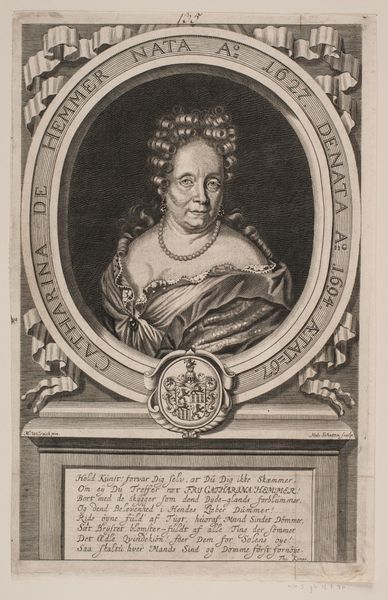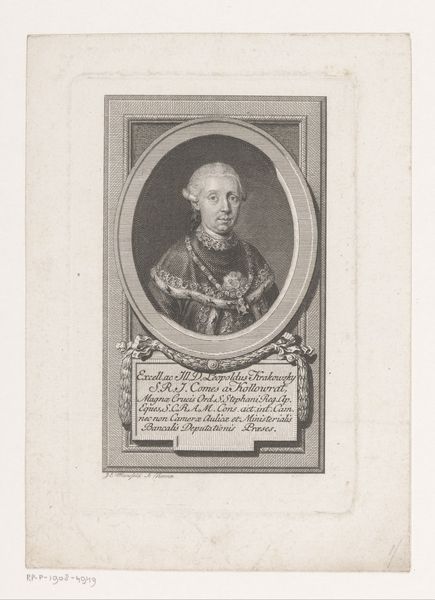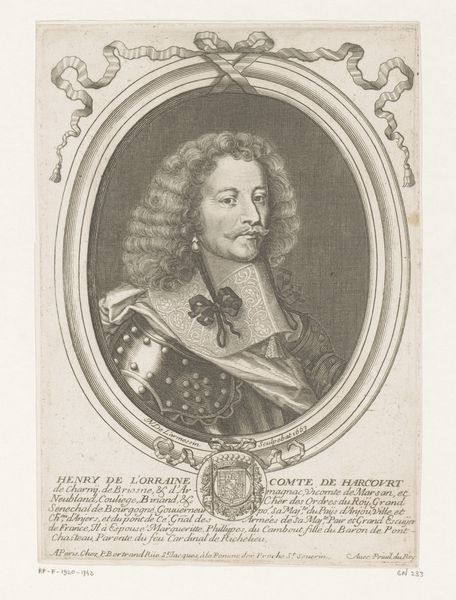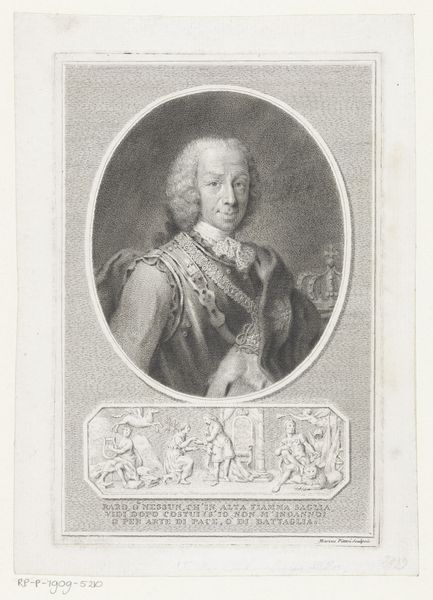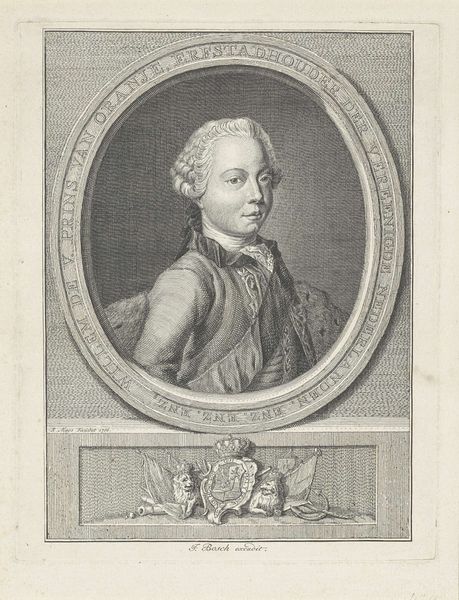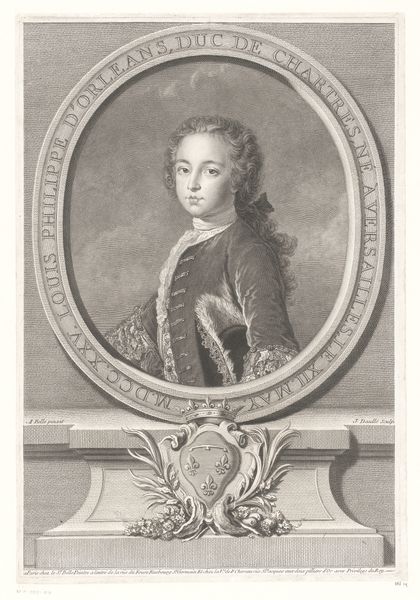
Dimensions: height 141 mm, width 98 mm
Copyright: Rijks Museum: Open Domain
Curator: This is an engraving titled "Portret van Max Emanuel von Toerring-Jettenbach" made sometime between 1750 and 1797 by Joseph Anton Zimmermann. The portrait depicts a nobleman within a framed oval, perched above his heraldic crest. What’s your initial impression? Editor: Stark and austere, perhaps intentionally so. The gray tonality creates a powerful, reserved ambiance, and this is amplified by the almost rigid formality of his attire, posture and composition. Curator: Considering its historical context, such formality makes sense. Engravings like this often served as tools for projecting power and legitimacy during the Baroque era. Max Emanuel von Toerring-Jettenbach, as a member of the Bavarian nobility, would have been very aware of his family's standing in society and would want this portrayed visually. This medium would have been well suited for mass distribution. Editor: The symbolism is overt: armor, a prominent noble order, the crest below…each reinforces his authority and lineage, but what's interesting is the absence of overt ornamentation, at least relative to other baroque portraits of the period. The artist seems more interested in communicating raw, unadorned power. Perhaps a shift away from pure display was beginning? Curator: Absolutely. While adhering to traditional conventions, there's a conscious attempt to strip away excess and highlight raw power. The armour, for example, serves less as an indication of militaristic prowess and more as a representation of unyielding strength. By extension it reflects the perceived power structures of 18th-century Europe. How interesting that while notions of freedom and rights of man were developing among the intellectuals, entrenched authority was busy constructing and defending the visuals of social hierarchy. Editor: The limited grayscale helps enforce that idea, but what is also of particular interest to me is how even in something designed to evoke nobility and history we have this modern, restrained element in visual language – signs of an approaching cultural and political shift even within formal portraiture. The image speaks about historical continuities through these symbols and yet hints at cultural transformations. Curator: An astute observation. The visual language simultaneously upholds tradition while subtly acknowledging the winds of change. It’s precisely in this tension, this moment of transition, that the engraving finds its contemporary relevance. The artwork is speaking both forwards and backwards in time, through a language of symbol.
Comments
No comments
Be the first to comment and join the conversation on the ultimate creative platform.
